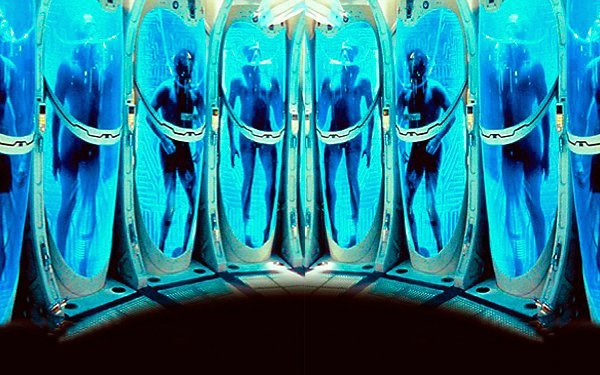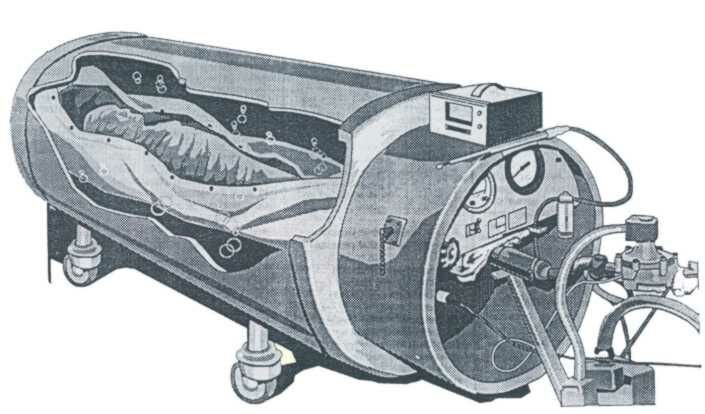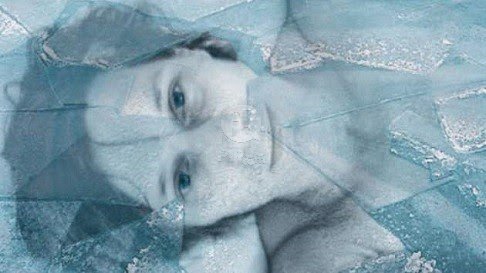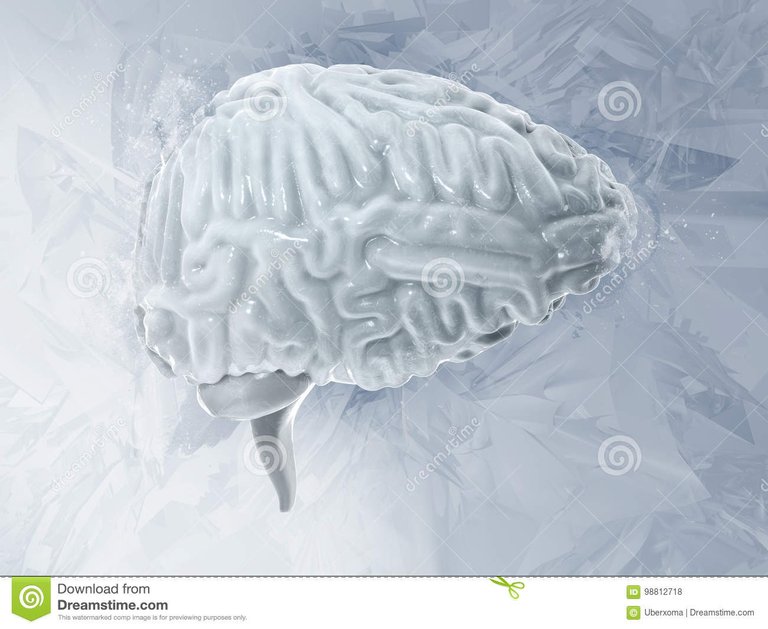Hello friends of Steemit Today I bring a topic that is extremely important and that began to take value over the years, because it is a clear example of how most of the sciences come together to reach the goal. Cryonics the innovative scientific method.
Cryonics is the conservation at low temperature (usually at -196 ° C) of people who can not be supported by contemporary medicine, with the hope that resuscitation and restoration to full health is possible in the distant future. The cryopreservation of humans is not reversible with current technology; The cryonicistas hope that the medical advances someday allow to revive the people cryopreserved
However, at present, the processes still lead to injuries that are not reversible with the present technology, which is why a joint development and improvement of the methods and technologies used will be necessary.
Let's start

What is Cryonics about?
I think many of us are familiar with this image and that is the reality that is expected in the coming years
It is about cooling legally dead people to liquid nitrogen temperatures where physical deterioration stops, with the hope that future scientific procedures will one day revive them and return them to youth and good health.
The tissue preserved in liquid nitrogen can survive centuries without deterioration. This simple fact provides an imperfect time machine that can transport us almost unchanged from the present to the future: we simply need to freeze in liquid nitrogen. If freeze damage can be cured someday, then a way to travel back in time to the era in which the cure is available would be possible. Although unattractive for the healthy, this possibility is more attractive for the terminally ill, whose options are somewhat limited. Far from being an idle speculation, this option is available to anyone who so wishes. (Note Ettinger 1960)
Cryopreservation aims to maintain cellular viability and function at low temperatures, usually between -133 ° C to -196 ° C (Boiling point of nitrogen). These techniques have been used for the biological conservation of stem cells, embryos, sperm, ovules among other cells for several decades. The difficulty is not the conservation at low temperatures, since there are no thermal or diffusion phenomena that lead to harmful reactions; rather, it is found in freeze-thaw processes. The cell membrane is one of the main structures affected due to freezing. Its structure is represented by a lipid bilayer, which undergoes a liquid-solid transition when the temperature decreases, making it extremely fragile.
What theory does Cryonics use?
Long-term memory is stored in cellular structures and molecules within the brain. In surgeries in the aortic arch, hypothermia is used to cool the body while the heart is stopped; This is done primarily to save the brain by slowing down your metabolic rate, reducing the need for oxygen and, therefore, reducing damage from lack of oxygen. The metabolic rate can be reduced by approximately 50% at 28 ° C, and by about 80% at 18 ° C or deep hypothermia. By keeping the brain at about 25 ° C (considered deep hypothermia), the surgeries can be stretched for about half an hour with very good rates of neurological recovery; stretching that to 40 minutes increases the risk of neurological damage in the short and long term.
Cryonics goes beyond the general consensus that the brain does not have to be continuously active to survive or retain memory. Cryonics states controversially that a human person survives even within an inactive brain that has been severely damaged, provided that the original coding of memory and personality can, in theory, be inferred and adequately reconstituted from the structure that remains. The cryonists argue that, while the brain structure remains intact, there is no fundamental barrier, given our current understanding of physical law, to recover its information content. Crionicists argue that true "death" must be defined as the irreversible loss of critical brain information for personal identity, rather than the inability to resuscitate using current technology. The cryonics argument that death does not occur as long as the brain structure remains intact and theoretically repairable has received some conventional medical discussion in the context of the ethical concept of brain death and organ donation.

Cryonics uses temperatures below -130 ° C, called cryopreservation, in an attempt to preserve enough brain information to allow the future rebirth of the cryopreserved person. Cryopreservation can be achieved by freezing, freezing with cryoprotectant to reduce damage by ice or by vitrification to avoid damage by ice. Even using the best methods, the cryopreservation of entire bodies or brains is very harmful and irreversible with current technology.
Cryonics requires future technology to repair or regenerate tissue that is diseased, damaged or missing. Brain repairs in particular will require an analysis at the molecular level. It is assumed that this technology for the distant future is nanomedicine based on molecular nanotechnology. Methods of biological repair or mental load have also been proposed.
Could this project fail?
Trying to prove that something is false is often the simplest method of clarifying exactly what is required to make it happen. A consideration of the criterion of the information theory of death makes it clear that, from a technical point of view (ignoring several non-technical issues), there are two and only two ways in which cryonics can fail .
Cryonics will fail if:
- The theoretical death of information occurs before reaching the temperature of liquid nitrogen .
- The repair technology that is feasible in principle is never developed and applied in practice, even after the passage of centuries.
The first failure criterion can only be considered in the context of the current understanding of freeze damage, ischemic injury and synaptic plasticity and memory mechanisms. If memory and personality are destroyed in the sense of the theory of information by freezing and the ischemic injury that could precede it can only be answered considering both the physical nature of the memory and the nature of the damage to which the brain is subjected before achieve the stability provided by storage in liquid nitrogen. The following sections, therefore, will provide brief reviews of these topics.
The second failure criterion is considered in subsequent sections on technical issues, which analyze in more detail how future technologies could be applied to the repair of frozen tissue.
Risk Factor

Perhaps the most dramatic injury caused by freezing is macroscopic fractures. The tissue becomes extremely brittle at or below the glass transition temperature at approximately 140K. Continuous cooling to 77K (the temperature of liquid nitrogen) creates tensile stress in the vitreous material. This is aggravated by the skull, which inhibits the contraction of cranial contents. This stress causes gross macroscopic fractures evident in the tissue.
Fractures that occur below the glass transition temperature result in very little loss of information. While it is dramatic, it is unlikely that this damage causes or contributes to the theoretical death of the information.
The damage most commonly associated with freezing is caused by ice. Contrary to common belief, freezing does not cause cells to break like water pipes on a cold winter day. Quite the contrary, the formation of ice takes place outside the cells in the extracellular region. This is mainly due to the presence of extracellular nucleating agents on which ice can form and the comparative absence of intracellular nucleating agents. Consequently, intracellular best selling liquids.
Without cryoprotectants, cell shrinkage and high salt concentrations during freezing generally prevent frozen cells from returning to work after thawing. In tissues and organs, ice crystals can also interrupt connections between the cells that are necessary for organs to function. The difficulties of recovering large animals and their individual organs from a frozen state have been known for a long time. Attempts to recover frozen mammals by simply reheating them were abandoned in 1957
Relevant information
Despite the advances that have been developed, cryonics is still a topic treated with skepticism by certain parts of the scientific community, 9 denouncing it as unfounded pseudoscience. Valid criticisms hold that current practice has limitations due to technology; however, cryonicists respond that the demonstration of the reversibility of preservation is not necessary to achieve the current goal of cryonics, which is the preservation of the brain, enough to prevent the theoretical death of information until it is possible to repair it in the future . Among the cryonists are scientists from various disciplines such as: biology, ethics and theology, physics, nanotechnology and computing, and neuroscience.10 Support is based on projections of future technology, especially molecular nanotechnology and nanomedicine; it is expected that in a few decades or centuries it is possible to repair and regenerate at the molecular level the damaged organs and tissues
The cryobiologist Dayong Gao says that "people can always hope that things will change in the future, but at this moment there is no scientific basis to support cryonics." Alcor does not agree, declaring that "there are no known credible technical arguments that lead us to conclude that cryonics, carried out in good condition today, would not work". Also, although it is universally accepted that "personal identity" is not interrupts when brain activity temporarily ceases during incidents of accidental drowning (where people have regained normal functioning after fully submerging in cold water for up to 66 minutes), some people express concern that a centuries-long cryoconservation could interrupt your conception of personal identity, in such a way that the revived person "would not be you"
What is the Criónica ?. Interview with Andy Zawacki, Operations Director of the Cryonics Institute.

As always I bring the most recent news on the subject that is being discussed
Today, SevenPonds speaks with Andy Zawacki, Operations Director of the Cyronics Institute (CI) in Clinton Township, Michigan. Andy has been collaborating with the Institute since 1985, and currently supervises and coordinates the incorporation of new members, prepares documents, and daily reviews the maintenance of the facilities, to ensure the safety of the suspension tanks. Part of CI's mission is to offer "a second chance in life".
Conclusion
Some scientists have expressed skepticism about cryonics in media sources, however, the number of peer-reviewed articles on cryonics is limited because their speculative aspects place it outside the focus of most academic fields. While most neuroscientists agree that all the subtleties of the human mind are contained in their anatomical structure, few neuroscientists will comment directly on the subject of cryonics because of its speculative nature.
This subject has brought many controversies, on the part of many doctors, biologists, and physicists. Some agree and others do not, but only time will give the reason to each one.
Next I leave a video that explains the whole process.
Ref Information
- Whetstine, L; Streat, S; Darwin, M; Crippen, D (2005). "Pro/con ethics debate: When is dead really dead?
- Luehr M, Bachet J, Mohr FW, Etz CD (2014). "Modern temperature management in aortic arch surgery: the dilemma of moderate hypothermia"
- Mayford M, Siegelbaum SA, Kandel ER (April 10, 2012). <>"Synapses and Memory Storage"
- Stephen Chen. "Cheating death? Elderly writer is the first known Chinese to embrace cryogenics, her head now frozen by lab in Arizona | South China Morning Pos
- https://sociedad-crionica.org/que-es-la-crionica-entrevista-con-andy-zawacki-director-de-operaciones-del-cryonics-institute/
- Fahy GM, Wowk B, Wu J (2006). "Cryopreservation of complex systems: the missing link in the regenerative medicine supply chain
- https://es.wikipedia.org/wiki/Cri%C3%B3nica
- "Molecular Engineering: An Approach to the Development of General Capabilities for Molecular Manipulation," by K. Eric Drexler, Proceedings of the National Academy of Sciences (USA)
- https://en.wikipedia.org/wiki/Cryonics#cite_ref-Surgery_10-0
- http://www.cryonics.org/about-us/the-case-for-cryonics
Thank you for taking the time to read this publication. I hope you have a happy day, see you in the next. Do not forget to leave a comment about what you thought, thank you very much.@juanjdiaz89






This is a test comment, notify @kryzsec on discord if there are any errors please.
Being A SteemStem Member
excelente redacción men !
thank you bro for taking the time to read.